Fountain pen will not write, skips, or writes a few lines and stops.
If this is the first time the pen is used and you are using the cartridge then the pen has not been properly primed. Prime the pen again by squeezing the cartridge hard; you need to see a lot of ink come out of the tip.
If the fountain pen has been in use for a while and has written well in the past first run a small stream of cold water over the tip of the nib-test the pen – it should write. If this does not work try priming the pen again. If this does not work you may have to flush out the pen entirely. Do not soak your entire pen in water. Unscrew nib section from the pen and soak or flush this.
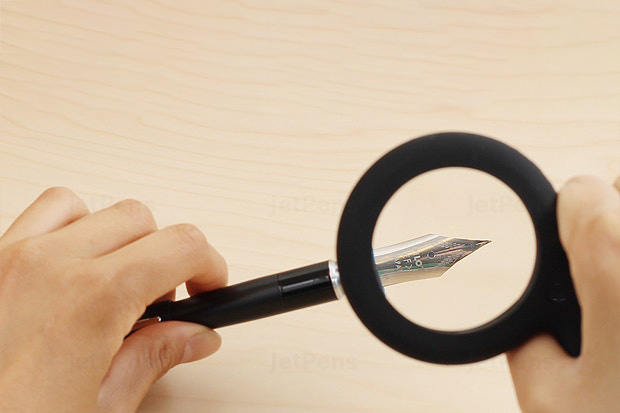
Fountain pen “globs” ink while writing or a large amount of ink flows onto the paper.
This means the ink holder has lost vacuum. When using a cartridge, this can occur when the ink supply is very low. Change the cartridge when the ink gets very low; do not wait until the pen stops writing. If this happens with a converter pump then the pump is bad; obtain a replacement. Occasionally a small hair or paper fiber can get caught in the nib slit. This will involve sending it to the service centre for cleaning.
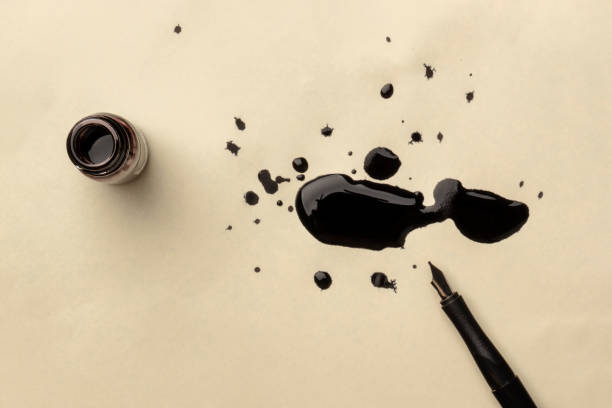
Fountain Pen Cleaning and Maintenance
Cleaning Your Fountain Pen
Just as your car needs its oil changed, your fountain pen needs internal cleaning. A once a month cleaning will often save you a trip to the service centre. For built in piston fillers, Fill and empty the pen three or four times with room temperature water to dissolve the solids. This is especially important if you change brands or even colors of ink, or use a cartridge exclusively (some inks react with each other, creating a viscous substance).
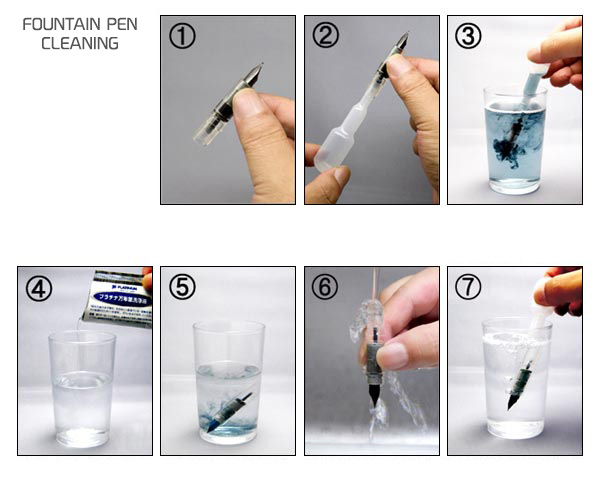
Cartridge/converter
Pens also need to be cleaned regularly – especially if cartridges are used most. Separate the cartridge carefully and hold the nib section with the nib facing down under room temperature tap water until the water runs clear Never put your pen away for an extended period with a cartridge full of ink in the pen.
Inks Dos-and Don’ts
We get many questions regarding what inks to use and what inks not to use. What is the safest solution? First of all, sticking to conventionally formulated fountain pen inks, such as those we sell on our own inks page. If you want to experiment, try sticking to pigment-based inks that are specifically formulated for fountain pens, such as those made by Sailor. And whatever ink you use, regular cleaning will help insure your pen’s feed system will have a long and happy life.
Choice of Paper
Use only high quality paper or at the very least, don’t use coated or “fuzzy” paper. The nib will clog and cause a loss of ink.
Storing your pen
If your fountain pen will not be used for an extended period of time, remove and clean the nib and converter. This prevents ink from drying and clogging the pen. Always store your pen with the nib in an upright position. This allows the ink to stay in the reservoir to prevent evaporation.
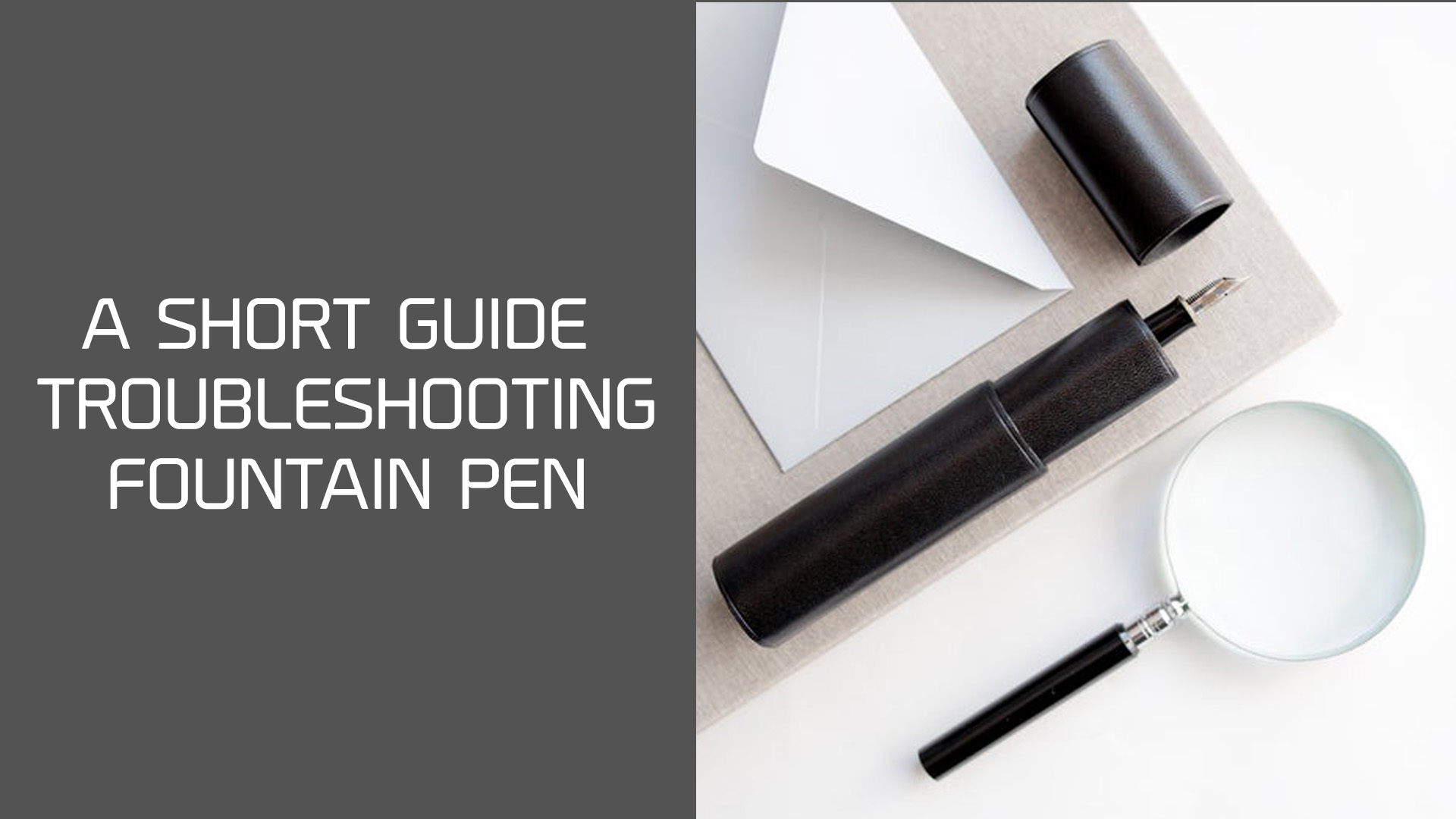
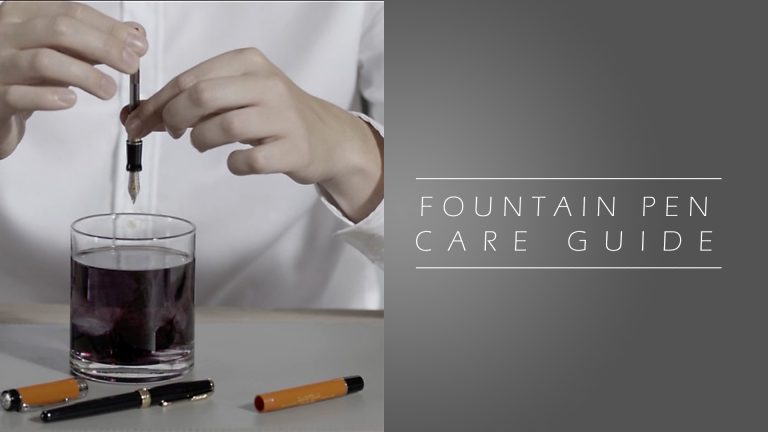
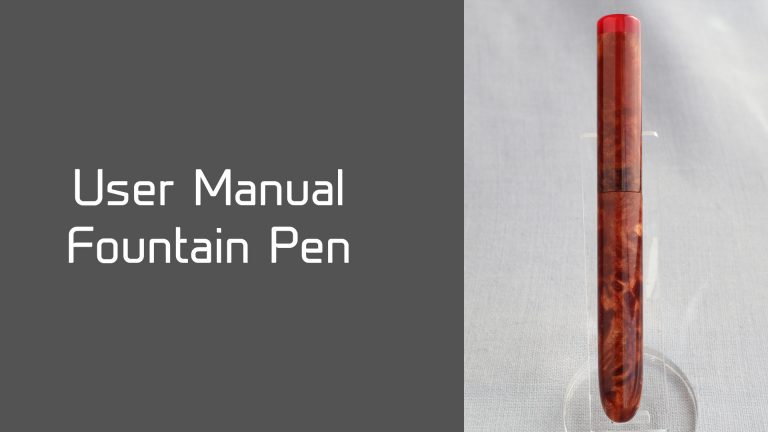
You’ve astonishing stuff on this web-site.
Thank you
Appreciate it for sharing your good web page.